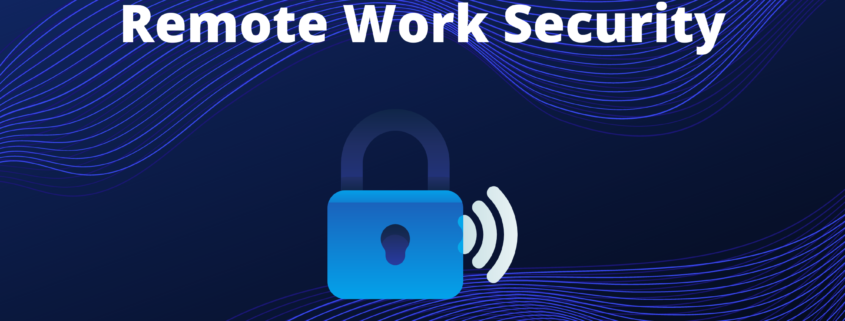How To Ensure Remote Worker Security
Ensuring Remote Worker Security when switching to a fully remote or partial work setup is not as easy as one might think. Companies like Buffer, Todoist, & Help Scout have been able to weather the pandemic with relative ease because they had already set up remote work policies, were already prepared for remote training and on-boarding, and had the necessary infrastructure already in place to deal with cybersecurity threats.
Unlike Buffer, Todoist, & Help Scout many companies were not prepared and were forced to make the switch overnight. This left the majority of them more vulnerable to a cyberattack and subsequent data breach.
Cybercriminals have taken notice, and are taking advantage of these vulnerabilities as we speak.
Before the pandemic, cybersecurity complaints to the FBI were roughly 1,000 a day. Since the start of the pandemic, daily complaints have jumped to a staggering count of 4,000. The rise in ransomware, phishing attacks, DDoS, and Malspam is positioning unsecured companies as sitting ducks for a serious cyberattack.
Risks & Consequences of not updating your security protocols and training programs
It is important to understand that most likely, your current protocols and training programs were created before the pandemic with a majority of your employees working onsite. Things are now drastically different.
Employees are now accessing company data through unsecured devices and connections that are beyond your control. This creates more vulnerabilities for cyberattacks than ever before.
To start, your existing protocols and training programs were created in a pre-pandemic world. However, things have since changed drastically.
Now, employees access critical company data through connections and devices that are beyond your control, making your company more vulnerable to cybersecurity threats than ever. This is the main reason why remote worker security is so important.
Failure to remote worker security protocols and training programs could lead to the following consequences:
Employee Inaction & Dip in Morale: Lack of training can lead to employees feeling helpless or indecisive when faced with a potential cyberattack. Compound that with employee’s learning curve with remote work may make it difficult or hard to ask for support.
Hampering of Business Growth: Cyberattacks will greatly affect your credibility and reputation in the market. Understandably, news of this will reach the market and make it difficult to retain current clients and attract new ones, because they have a valid reason not to trust you.
Business Paralysis: We have seen a surge in DDoS attacks over the past few months leading to a disruption in business continuity, website downtime, & increased vulnerability.
Compromise of Crucial Business Information: Failing to properly secure your company can be extremely costly. Cybercriminals will end up getting away with confidential client data, patents, sales information, business plans, business-critical data, and anything else you can think of.
Financial Implications: Most likely due to the pandemic, 2020 saw a 109% spike in ransomware attacks in the United States. Paying the ransom should be at the very bottom of your priority list. There is no telling that you will get your data back after paying a ransom. What you should worry about is the money you will lose from the loss of clients, damaged reputation, fines & fees if it is found that you were not properly secured, and much more.
Legal Sanctions: Cyber attacks can be a double-edged sword for companies that are not properly securing their data and their client’s data. Once a data breach occurs, there could be an investigation to look into adherence to cybersecurity rules and regulations. If you are found to not be compliant, the fines and fees could be the final nail in the coffin on top of the damage to reputation and cash flow.
How Can You Ensure Remote Worker Security?
Cybercriminals are on the hunt for vulnerabilities they can exploit 24/7/365. To protect from cyberattacks and subsequent data breaches, your company’s cybersecurity needs to be one step ahead of the cybercriminals.
With the majority of workers being remote, this amplifies the potential for vulnerabilities and cyberattacks. All it would take is a password that was shared via teams, slack, skype for business, etc. to be sent to a coworker coupled with an accidental click on a phishing email. Even worse, an employee simply logs onto a public Wi-Fi connection to access some company data quickly and boom, you’ve been hacked.
That being said, it is critical to have a new IT Policy created with the remote workforce in mind. Ensure that all employees receive new training in conjunction with the new IT Policy and regularly moving forward. Data-Tech’s Remote Workforce Solution services are a great place to start!
Personal Device Security: Allowing employees to use personal devices for work does not mean you are signing your death certificate. It means that it is your responsibility to ensure they are keeping a minimum standard of security. Take the time to clearly define what uses or actions are permissible or restricted — the type of devices, operating systems, applications, and websites that can be accessed. Also, make sure to give your employees all of the necessary tools, information, and training that are needed before they start.
Network Security: A LAN connection in your office is much more secure than a home Wi-Fi or Public Wi-Fi network. The switch to a remote work environment removes a LAN connection from the list of possibilities. Due to this, set a standard for minimum security requirements to prevent employees from putting company data at risk. Be as thorough as possible and define everything from Wi-Fi encryption standards, Wi-Fi password difficulty, network security software, router safety guidelines, and the types of devices that can be connected to the same network. Also, take a clear stance discouraging the use of public Wi-Fi. If an employee has no other option but public Wi-Fi, and the action needed to take cannot wait, give them a list of essential safety guidelines that they need to follow — secure connection, WPA3 compliance, websites to avoid, and so on.
Cybersecurity Training Programs: Most IT Teams are struggling to keep up with the demand this sudden switch to a remote work environment has caused. On top of their regular day-to-day work, they now have to make sure data and digital assets are safe and secure remotely. It is unlikely that the IT team will be able to address every need or issue as it arises. That said, makes sure to properly train employees on cybersecurity best practices and well equipped to deal with common cyber threats. The training program must include everything from password management, using multifactor authentication, identifying phishing and ransomware attacks, guarding personal devices, against cyberattacks, operating/updating security software, configuring Wi-Fi, setting up VPNs, email usage, reporting/responding to cyberattacks, and much more.
Time to Strengthen Your First Line of Defense
Cybercriminals are multiplying due to the endless amount of opportunities that companies create by not prioritizing the security of their data through the remote workforce. The easiest way to save your company time, money, and headaches is to partner with a proven partner.
If you are worried about the state of your remote worker security, contacting Data-Tech should be your first action. Data-Tech is positioned perfectly to secure your remote workforce through our in-house state of the art data center, an extremely knowledgeable team with decades of experience, and top of the line monitoring software.
To find out how Data-Tech can help your company ensure remote worker security, secure company data and decrease stress associated with cybersecurity contact us today!




